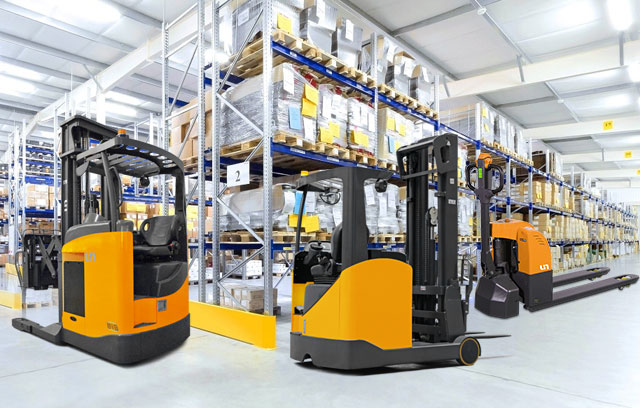The stability of rough terrain forklifts when driving on a slope or incline depends on several factors.
1. Design Features
Low Center of Gravity: Many rough terrain forklifts are designed with a low center of gravity, which enhances stability on uneven surfaces. This design helps prevent tipping, especially when carrying loads.
2. Load Capacity
Weight Distribution: Proper load management is crucial. Overloading or unevenly distributed loads can significantly affect stability. Operators should always adhere to the manufacturer's specified load capacities and ensure loads are centered and secure.
3. Incline Angle
Safe Operating Angles: Rough terrain forklifts have specific safe operating angles, usually indicated in the operator’s manual. Typically, they can handle inclines of 15-20 degrees, but this varies by model.
4. Terrain Conditions
Surface Type: The type of surface (e.g., gravel, mud, grass) can impact traction and stability. Rough terrain forklifts usually have specialized tires that improve grip and reduce slipping on uneven ground.
5. Operator Training
Skills and Awareness: Proper training is essential for operators to assess conditions, control speed, and maneuver safely on slopes. Experienced operators are better equipped to handle challenging terrains and make informed decisions.
6. Safety Features
Anti-Tip Systems: Many modern rough terrain forklifts are equipped with safety features, such as tilt alarms or stability indicators, to alert operators if the machine is in a precarious position.
7. Maneuvering Techniques
Approach Angles: Operators should approach slopes at the appropriate angle (usually straight up or down) rather than diagonally, which helps maintain balance and reduces the risk of tipping.
While rough terrain forklifts are designed to be stable on inclines and uneven surfaces, their performance depends on design features, load management, terrain conditions, and operator training. Following safety guidelines and understanding the machine's limits are crucial for safe operation on slopes.
- Home
- About
-
Product
-

IC Forklift
Ranges
-

Electric Forklift
Ranges
-

Warehouse Equipment
Ranges
-
- CUSTOMER CARE
- INDUSTRY SOLUTION
- News
- Contact








 中文简体
中文简体 عربى
عربى Español
Español














